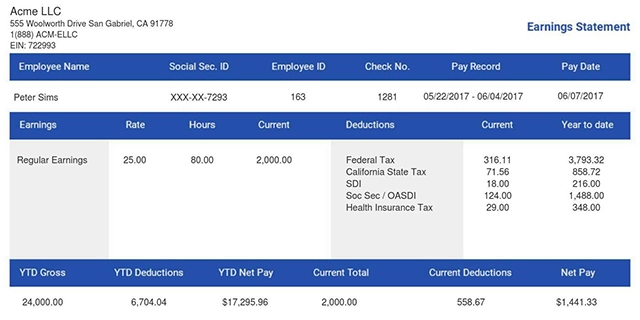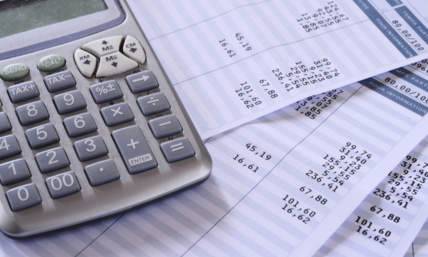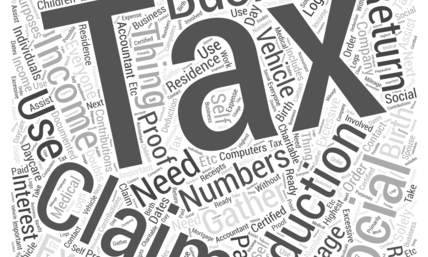All About Emergency Paid Sick Leave Act
Since the outbreak of COVID-19, the US government like many others around the world has been implementing new laws to ease the financial issues citizens and businesses may face. One of these laws was the Emergency Paid Sick Leave Act, put into effect in March 2020. While there have been several Acts put into effect since the pandemic arose, EPSLA was one of the main Acts that have kept workers from losing money due to time off they might need from COVID-19-related reasons.
This Act was specifically enforced so that those who needed time off work for potential COVID-19-related reasons were entitled to a certain amount of paid leave - something which some citizens would struggle without if struck ill with the coronavirus. This blog post will help you to understand what the Emergency Paid Sick Leave Act is, how it works, who qualifies, and how long it is in power. Read on to find out all this and more!
Also read: Work From Home Tax Deductions Due To Covid-19
- What Is The Emergency Paid Sick Leave Act?
- What Is FFCRA And How Does It Relate To EPSLA?
- What Pay And Sick Leave Do You Get Through EPSLA?
- Your Rights As An Employee To EPSLA
- Has The Emergency Paid Sick Leave Act Been Extended?
- Are Employers And Employees Reimbursed for EPSLA?
- The American Rescue Plan Act
- Reimbursement Caps
- Conclusion
What Is The Emergency Paid Sick Leave Act?
In response to the coronavirus pandemic that started in late 2019, Congress enacted the Families First Coronavirus Response Act (FFCRA) with the intention of helping those affected by the virus. This Act contained two further Acts that offered paid leave provisions - one of which was the Emergency Paid Sick Leave Act (EPSLA). The Emergency Paid Sick Leave Act covers certain employers to provide their employees with 80 hours of paid sick leave for full-time employees for specific COVID-related reasons.
This Act was created and amended in March and April of 2020 and was in use for the entire US up until the Emergency Paid Sick Leave Act end date December 20, 2020.
Also read: Employee Motivation Strategies
EPSLA Requirements
The Emergency Paid Sick Leave Act was only available to select businesses:
-
Private employers with less than 500 employees
-
All Government employers
-
Public Agencies with one or more employees
Employers fitting the requirements were required to provide paid sick leave to employees who were unable to work for six COVID-19-related reasons:
-
Employees subjected to Federal, State, or local quarantine or isolation orders
-
Employees advised to self-quarantine by a healthcare professional due to COVID-19 concerns
-
Employees experiencing COVID-19 symptoms or seeking a medical diagnosis
-
Employees caring for an individual who is self-isolating or in quarantine
-
Employees who are caring for his or her children whose usual place of care is unavailable due to COVID-19
-
Employers experiencing any other similar condition specified by the Secretary of Health and Human Services in charge of the Department of Health and Human Services.
EPSLA covered employees regardless of how long they had worked for their employer, except those who are healthcare providers or emergency responders.
Also read: The Right Way To Onboard Remote Employees
Small Business Exception
Those that own a company with fewer than 50 employees have a potential exemption from providing childcare-related leave to employees under EPSLA if they could prove that the requested leave would jeopardize the viability of the business as an ongoing concern. To prove this, an authorized officer of the business would have to determine that:
-
The absence of the employee requesting leave could potentially result in a risk to the financial health or operational capabilities of the business due to the employee’s specialized knowledge, skills, or responsibilities for the business.
-
Providing the employee’s leave request would result in the business’s expenses and financial obligations exceeding available business revenues which could cause the business to cease operating at a minimal capacity.
-
There are no available workers who are sufficient, willing, and qualified to cover the labor of services the employee requesting leave performs and these services are essential for the business to operate at a minimal capacity.
What Is FFCRA And How Does It Relate To EPSLA?
The Families First Coronavirus Response Act (FFCRA) is the main federal legislation containing EPSLA and other important Acts. FFCRA was placed into effect as of March 18, 2020, and provided expanded nutrition assistance, free coronavirus testing, enhanced unemployment insurance, increased federal Medicaid funding, and of course EPSLA. From April 1 through to December 31, 2020, FFCRA required employers to provide EPSLA and FMLA to employees affected by the COVID-19 pandemic.
Family And Medical Leave Act
The Family and Medical Leave Act (FMLA) was the second Act in FFCRA alongside EPSLA, made to help employees during the pandemic. This Act required employers with fewer than 500 employees to grant a maximum of 12 additional weeks of expanded Family and Medical Leave, with 10 weeks paid at two-thirds the employee’s regular rate of pay, providing the employee is unable to work due to childcare.
The first two of the 12 weeks' leave did not have to be paid at all, but employees could also claim EPSLA leave alongside FMLA. For self-employed individuals, FMLA allowed them to claim up to $200 per day or 67% of their average daily income for up to 10 weeks due to family leave.
What Pay And Sick Leave Do You Get Through EPSLA?
The Act ensured that those who met the requirements were given up to 80 hours of paid sick leave by their employer if they are full-time employees, while part-time employees were entitled to the number of hours that they work on average over a two-week period. Employees under quarantine or self-isolation order, experiencing COVID-19 symptoms, or seeking a diagnosis were covered by the EPSLA for sick pay minimum wage or the greater of the employee’s regular rate of pay up to $511 per day and $5110 in the aggregate.
Employees who require paid leave for the other qualifying COVID-related reasons are entitled to two-thirds of the amount above - up to $200 per day and $2000 in the aggregate. Self-employed individuals could also benefit from the Emergency Paid Sick Leave Act by claiming a sick leave tax credit equal to the amounts above or as an equivalent percentage of their average daily income for up to ten days.
Also read: Ways In Which You Can Show Employees You Are Thankful
Your Rights As An Employee To EPSLA
If you have had sick leave during the time the federal Emergency Paid Sick Leave Act was in force, you will be covered for 80 hours of paid sick leave providing you and your employer meet the requirements. Employers who refused to give paid sick leave to workers who were entitled to it through EPSLA will be subject to enforcement proceedings, as this violates section 6 of the FLSA.
Employees who have taken paid sick leave under EPSLA will be protected from employer discrimination in the form of discharging, disciplining, or filing EPSLA-related complaints. Employers who have violated this rule will be subject to penalties and investigation. If your employer did not pay you for your eligible sick time off work, you can contact WHD and file a complaint as this is a violation of EPSLA. You have two years from when the violation occurred to file a complaint.
Has The Emergency Paid Sick Leave Act Been Extended?
The Emergency Paid Sick Leave Act extended or was taken over by new temporary Acts in certain states, but as a federal law, the Emergency Paid Sick Leave Act end date was December 20, 2020. For states such as California, New York, New Jersey, and Pennsylvania, the emergency paid sick leave act extended further into 2021 than the standard federal act did.
While this means that some employers no longer have to give their employees paid sick leave, employers can still face legal inquiries from actions they did or did not do when EPSLA was a federal law. All employers are still able to offer voluntary Emergency Paid Sick Leave or the company standard sick pay at their own obligation. If you are unsure which leave you have been granted, you can look on your paystub for your leave rate and name. Check out the check stub maker for online paystub generation!
Are Employers And Employees Reimbursed for EPSLA?
Employee Reimbursement
Unfortunately, employees do not get Emergency Paid Sick Leave Act reimbursement, and leave cannot be carried forward. This means that workers who did not request EPSLA from April 2020 to December 2020 can’t request it after the December cut-off period.
Employer Reimbursement
For employers who gave employees requested Emergency Paid Sick Leave during the time EPSLA and FFCRA were in effect, you could claim FFCRA and Emergency Paid Sick Leave Act reimbursement in the form of tax credits up until March 31, 2021. Originally, employers could only claim FFCRA and EPSLA refundable tax credits up until January 1, 2021, but thanks to the Tax Relief Act of 2020, this date was extended until March 31, 2021.
Employers could claim a tax credit equal to 100% of the amount they paid in EPSLA and FMLA. The Tax Relief Act of 2020 gave employers an extra calendar quarter of paid leave tax credits to allows employers to take a payroll tax credit for providing EPSLA under two conditions:
-
To recover costs of providing FFCRA and EPSLA leave in 2020
-
To voluntarily provide paid emergency sick leave and medical leave in Q1 of 2021
Self-employed individuals were also entitled to equivalent credits based on similar circumstances. Any voluntary paid sick leave given by employers after March 31, 2021, will not receive Emergency Paid Sick Leave Act reimbursement, however, the new American Rescue Plan Act came into effect, allowing employers to claim tax credits for continuing employee sick pay.
The American Rescue Plan Act
For employers who voluntarily gave employees paid sick leave, you can claim reimbursements in the form of tax credits thanks to the American Rescue Plan Act. The American Rescue Plan Act (ARPA) extended and enhanced the federal tax credits employers could claim due to voluntarily providing emergency paid sick and family leave after EPSLA and FFCRA ended.
Along with expanding paid sick and family leave tax credit availability, ARPA has also expanded the leave provisions allowing paid time off for both COVID-19 testing and vaccinations. This Act covers leave from April 1, 2021, through to September 30, 2021, so it is still available for employers to claim these reimbursements. Although FFCRA and its fellow Acts are no longer mandatory, the qualifying conditions for receiving tax credit still remain. This means that employers should still comply with all of the FFCRA’s original requirements as well as the ARPA requirements.
ARPA Requirements
For employers to successfully claim tax credit through ARPA, they must be a private company and have less than 500 employees that have provided paid leave using EPSLA and FMLA requirements. Federal government employers, agencies or instrumentality of the Federal government are not eligible employers, so are not entitled to receive any tax credits for providing paid leave wages (except for organizations described in section 501(c)(1) of the Internal Revenue Code.
Reimbursement Caps
Reimbursement in the form of tax credits has a per-employee cap. The amount of this cap will depend on the circumstances triggering the emergency paid leave, but for each instance, the employee must be unable to work remotely.
The FFCRA capped the amount of paid leave wages that employers could claim tax credit at $10,000 per employee. This meant that employers who gave employees emergency paid leave under any act in FFCRA were entitled to up to $10,000 tax credit per employee. This cap was later raised by the ARPA to $12,000, meaning that employers could now claim a maximum of £12,000 in tax credit for each employee they gave voluntary emergency sick pay to.
Also read: A Guide On How to Continue Hiring During a Pandemic
Conclusion
For those who have been affected by COVID-19 and have had to request leave, as long as your company and reason for leave were eligible, you should receive some form of pay - even if it might not be your full regular pay. Following our advice, you can file a complaint as an employee if you think your employer has unlawfully denied your emergency paid leave, just remember to check that you met the requirements for the specific Act in which you tried to request paid leave.
If you are still financially struggling from the impact of the Coronavirus pandemic, it might be worth spending some time on your finances. You can try listening to finance podcasts in your spare time to better understand your finances and learn how to make the most of your money.















